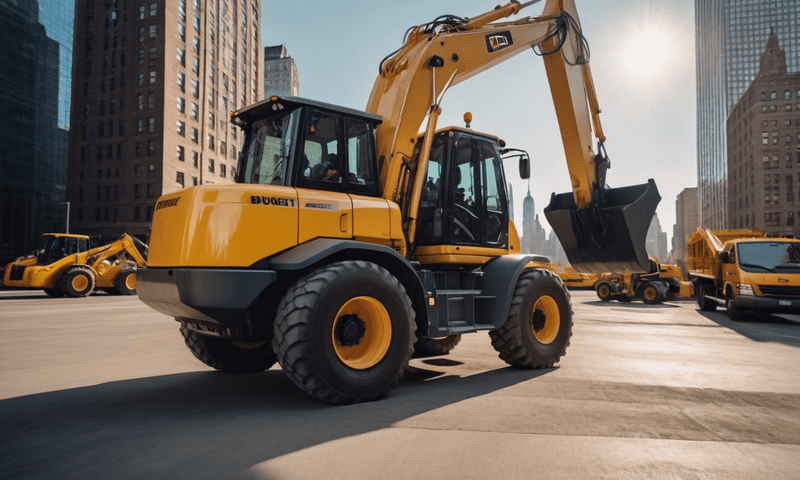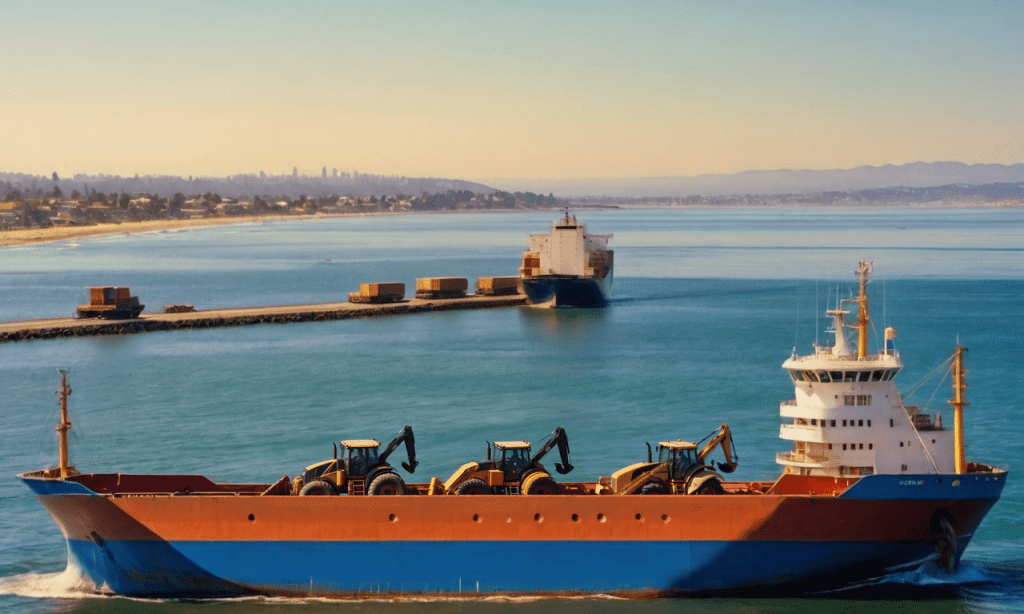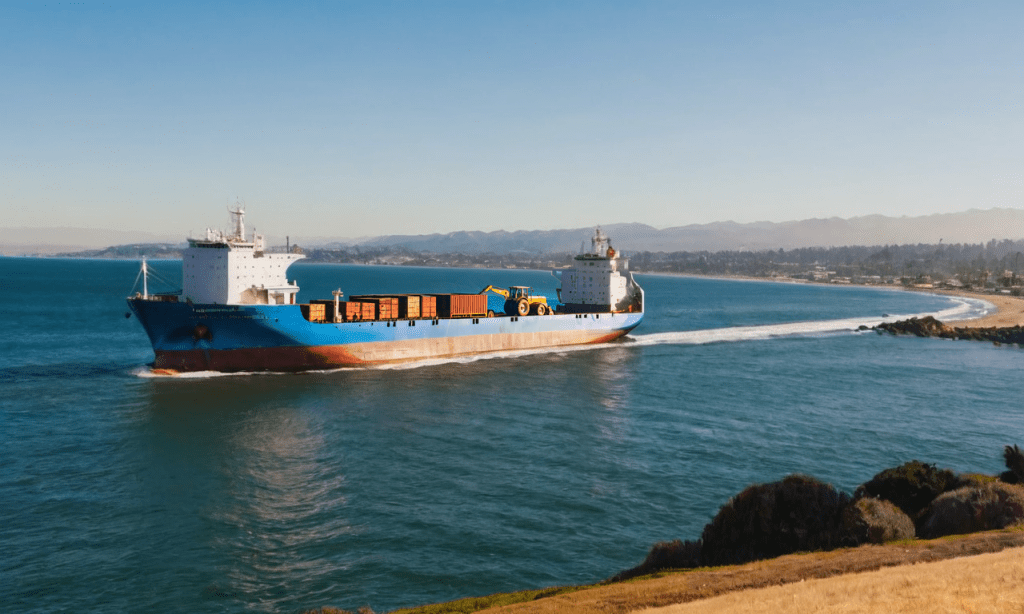
When it comes to the logistics of transporting heavy equipment, one critical question often arises: Is it possible to track the shipment of such large and valuable items? The straightforward answer is, yes, it is indeed possible and increasingly becoming a standard practice in the industry. With advancements in technology, tracking the movement of heavy equipment has become more accessible and accurate, providing peace of mind to both the shipping company and the client.
The ability to track heavy equipment during transit is not just a matter of convenience; it's a necessity for ensuring the safety, efficiency, and accountability of the shipping process. Whether it's construction machinery, industrial tools, or large vehicles, knowing the whereabouts of these items can significantly impact the operational dynamics of businesses relying on their timely delivery.
In this article, we will delve into the various methods and technologies used for tracking heavy equipment shipments, the challenges faced in this process, and how the industry is evolving to address these issues. From GPS tracking systems to the latest in mobile app technology, we will explore how these tools are revolutionizing the way heavy equipment is monitored during transit, ensuring that these valuable assets are always under watchful eyes until they reach their destination.

Tracking Heavy Equipment: Ensuring Efficiency and Security in Transportation
When addressing the query, "Is it possible to track the shipment of heavy equipment?" the answer is a resounding yes. In today's logistics landscape, tracking heavy equipment during transit has become a standard and essential practice. This capability is crucial not only for the peace of mind of those shipping heavy equipment but also for the efficiency and security of the transportation process.
The tracking of heavy equipment involves a range of methods and technologies. GPS tracking systems are at the forefront, offering real-time location data of the equipment. This is especially crucial for construction equipment, as any delays or misplacement can result in significant project setbacks. Additionally, the use of RFID (Radio-Frequency Identification) tags provides another layer of tracking, especially useful in managing multiple pieces of equipment simultaneously.
For companies involved in transporting heavy equipment, these tracking technologies are not just tools but necessities. They ensure that heavy machinery reaches its destination safely and on time, which is critical in industries like construction where timing and precision are paramount. Furthermore, construction equipment tracking systems have evolved to offer more than just location data; they now provide insights into the condition and operational status of the equipment, enhancing the overall management of these valuable assets.
Methods of Tracking Heavy Equipment Shipments
Tracking heavy equipment shipments has become more sophisticated and user-friendly over the years. One of the most common and effective methods is GPS tracking. GPS devices installed on heavy machinery provide real-time location data, which is accessible via computers or smartphones. This technology is particularly beneficial for long-distance heavy equipment transport, offering continuous monitoring throughout the journey.
Another innovative method is the use of RFID technology. RFID tags attached to heavy equipment enable companies to track not just the location but also the movement history and usage of the equipment. This is especially useful in large construction sites where keeping track of numerous pieces of equipment is a challenge.
Mobile apps and online platforms have also transformed heavy equipment shipping. These platforms offer an interface where clients can view the location and status of their equipment in real-time. This level of transparency and accessibility has significantly improved customer satisfaction and trust in the heavy equipment shipping process.
Satellite tracking is another method that comes into play, particularly in remote areas where traditional cellular-based GPS might not be as effective. This method ensures that even in the most challenging environments, the tracking of heavy equipment remains uninterrupted, providing a comprehensive solution for transporting heavy equipment across diverse terrains and locations.

Challenges in Tracking Heavy Equipment
While the technology to track heavy equipment shipments has advanced, several challenges still persist. One of the primary issues is the geographical limitation of certain tracking technologies. For instance, GPS systems, while effective in most areas, can face disruptions in remote or densely built-up locations. This can lead to gaps in tracking data, posing a challenge for companies that transport heavy equipment across varied landscapes.
Technical issues can also arise, such as hardware malfunctions or software glitches in tracking systems. These technical setbacks can lead to inaccurate tracking information, which can be problematic for time-sensitive construction projects relying on the timely delivery of heavy machinery.
Cost is another significant factor. Implementing high-end tracking systems for heavy equipment shipping can be expensive. This cost can be a barrier for smaller companies or those just starting to adopt these technologies. Balancing the need for effective tracking with budget constraints is a constant challenge in the industry.
Additionally, tracking multiple pieces of heavy equipment simultaneously can be complex. Each piece of machinery might have different tracking requirements and routes, making the management of these systems intricate and time-consuming.
Environmental factors, such as extreme weather conditions, can also impact the effectiveness of tracking systems. Heavy rain, snow, or other severe weather conditions can interfere with the signals of tracking devices, leading to potential delays and disruptions in transporting heavy equipment.
Despite these challenges, the industry continues to evolve, with ongoing improvements and innovations in tracking technologies. These advancements are gradually overcoming the hurdles, making the process of tracking heavy equipment more reliable and efficient.
The Future of Heavy Equipment Shipment Tracking
Looking ahead, the future of heavy equipment tracking is poised for further innovation. Emerging technologies like the Internet of Things (IoT) and Artificial Intelligence (AI) are set to offer even more sophisticated tracking solutions. These advancements could lead to predictive analytics, where construction companies can anticipate maintenance needs or potential breakdowns before they occur. Additionally, integrating AI with GPS tracking could enable more dynamic routing and scheduling, adapting in real-time to changes in project timelines or job site requirements.
The integration of these technologies promises to enhance fleet management further, allowing for more precise tracking and efficient use of equipment across multiple job sites. As these technologies become more accessible and cost-effective, we can expect a surge in their adoption, leading to smarter, more efficient, and more responsive construction site operations.

Conclusion
The ability to track equipment, particularly in the field of heavy machinery, has become an indispensable aspect of modern fleet management for construction companies. The advancements in GPS tracking and other technologies have not only made it possible but also more efficient to monitor and manage valuable equipment across various job sites. As we look to the future, the integration of emerging technologies promises to further transform equipment tracking, making it an even more integral part of construction site operations. The ongoing evolution in this field is a testament to the relentless pursuit of efficiency and innovation in heavy equipment management.
Ready to experience the next level of heavy equipment shipment services? Visit A1 Auto Transport to discover how our cutting-edge tracking solutions can streamline your transportation needs. For more information or to get started, contact us directly. Let us help you move forward with confidence!







 Share on Facebook
Share on Facebook Share on LinkedIn
Share on LinkedIn Share on Twitter
Share on Twitter




 Google
Google  Instagram
Instagram  Trustpilot
Trustpilot 

